
Renting in Utah can feel overwhelming, especially if you’ve never had to dive into the fine print of a lease or navigate landlord-tenant laws. As a broke law student renting in Salt Lake City, I know how important it is to understand my rights and responsibilities before signing a lease. While many of these can be found on the contract itself, it is virtually impossible to include everything within those four corners. Utah’s rental laws are not always as straightforward as they seem, and in my years of being a tenant, I have compiled a list of things I wish I had known sooner.
Whether you’re signing your first lease, worried about your security deposit, or facing eviction, knowing your rights as a Utah tenant can save you from a bad situation. Below is a guide to the most important tenant rights every renter should understand.
Utah Tenant Rights and Responsibilities
Utah law sets clear rules for both landlords and tenants. Renters have the right to safe, livable housing, while also being responsible for timely rent payments and keeping the property in good condition. Landlord-tenant relationships in Utah are primarily governed by the Utah Fit Premises Act (Utah Code Ann. §§ 57-22-1 to 57-22-7) and a few other related statutes.
Utah Lease Agreements: What Must Be in Writing?
 A lease, also known as a contract, lays the foundation of your rental agreement. Although Utah generally allows for both written and oral rental agreements, Utah Code Ann. § 25-5-4 requires certain agreements to be in writing. For example, § 25-5-4(1)(a) states that an agreement that lasts more than a year is void unless it is in writing.
A lease, also known as a contract, lays the foundation of your rental agreement. Although Utah generally allows for both written and oral rental agreements, Utah Code Ann. § 25-5-4 requires certain agreements to be in writing. For example, § 25-5-4(1)(a) states that an agreement that lasts more than a year is void unless it is in writing.
However, a written agreement is generally the safest option because there is less room for misunderstanding. In the event that issues do arise between the tenant and their landlord, it is best to have a document to look back at.
Lease Agreements should address the following (Note: this is a non-exhaustive list):
- Rent amount
- Security Deposit amount, if applicable
- Payment due date
- Utilities (What is/isn’t included)
- Communal fees, if applicable
- Any other fees (Ex: cable)
- Lease term
- Rules on pets
- Maintenance responsibilities
Utah Security Deposit Laws
Landlords are required by law to return your security deposit within 30 days after the tenancy ends (assuming you vacate and return possession of the property by then). Landlords may send your deposit via mail or electronically, so make sure you provide them with your most up-to-date information.
If the landlord keeps any portion of the deposit, they are required to provide an itemized list of deductions.
One thing that may surprise many first-time renters in Utah, is that landlords may deduct for cleaning to restore the unit to its move-in condition, not just for damage caused by the tenant. This means you could still be financially responsible if you don’t leave the place exactly as it was when you moved in.
Utah Tenant Rights for Repairs and Habitability
The Utah Fit Premises Act requires landlords to maintain rental units in safe, sanitary, and fit for human occupancy.
Some features that all residential rental units must have are:
- Electrical systems
- Heating
- Plumbing
- Hot and cold water
If something breaks or the rental unit’s habitability is compromised, it is best for tenants to submit a written notice. After doing so, landlords are required to act within a reasonable period of time; this can be anywhere from 24 hours to 10 calendar days depending on the severity of the issue. If repairs aren’t made, tenants may be able to withhold rent or seek legal remedies. Our breach of contract attorneys can help you enforce your rights.
Utah Eviction Laws and Tenant Protections
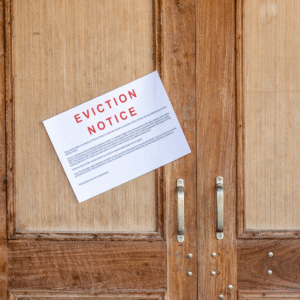 A landowner may evict you for reasons such as:
A landowner may evict you for reasons such as:
- failing to pay rent,
- violating the terms of the lease agreement
- engaging in criminal activity on the property.
Utah’s unlawful detainer laws (§ 78B-6-801 et seq.) allow landlords to act quickly if this happens. For example, if a tenant fails to pay rent on time, the landlord can provide the tenant with a 3-day notice to pay or vacate. If the tenant is unable to pay in time, the landlord can file for eviction.
Federal Tenant Rights That Apply in Utah
Regardless of what state you live in, these are some of federal protections every landowner/tenant should be aware about:
- The Fair Housing Act (42 U.S.C. §§ 3601–3619) prohibits housing discrimination based on race, color, religion, sex, national origin, disability, or familial status.
- The Fair Credit Reporting Act (15 U.S.C. § 1681) requires your consent for a landlord to run a credit check. If you are denied housing as a result, the landlord is required to notify you.
- The Americans with Disabilities Act (ADA) requires landlords to make reasonable accommodations and to allow reasonable modifications for tenants with disabilities.
- § 504 of the Rehabilitation Act prohibits discrimination based on disability on programs that receive federal financial assistance, such as federally funded housing programs.
Surprising Utah Rental Laws Tenants Should Know
- Short Notice Periods: When dealing with month-to-month leases for example, many other states require landlords to give notice to tenants 30+ days in advance, whereas Utah only requires 15 days.
- No Rent Caps: Landlords in Utah can raise rent by any amount with proper notice.
- Eviction Process Timeline: The 3-day notice for nonpayment of rent and subsequent court process allows landlords to act quickly.
Practical Tips for Utah Renters
- Document Everything: Take photos/videos of the apartment before moving in, after moving out, and throughout the duration of your lease if anything breaks of the unit becomes uninhabitable. Keep copies of your rent payments as well.
- Communicate in Writing: Text/email your landlord when possible, especially for repair requests and important notices.
- Ask Before You Sign: Clarify important things such as who will be responsible for repairs and/or utilities. While having these conversations may seem awkward at first, they can save you a major headache down the road!
Take Control of Your Renting Experience
Understanding your rights as a tenant is the first step to avoiding disputes and protecting your home. If you are facing a rental dispute or have questions about your lease, Christensen & Jensen is here to help you navigate those situations with confidence. Request a consultation today. Landlords must return deposits within 30 days after the lease ends, with an itemized list of deductions if any. No. Utah landlords must provide written notice – usually 3 days for unpaid rent, or longer depending on the lease type. Yes, but only after providing proper notice (typically 15 days for month-to-month agreements). Rent control does not exist in Utah. Landlords must keep rentals habitable and safe, fixing heating, plumbing, and structural issues within a reasonable time after notice.
Frequently Asked Questions About Renting in Utah

 So, you’re an entrepreneur with the next big idea? Maybe you’ve already started brainstorming logos, looking at locations, or thinking about hiring new employees. While the idea stage might be the most exciting part of bringing your business to life, an equally important part is fulfilling the legal requirements surrounding entrepreneurship in Utah. This article walks you through five essential legal to-dos, from choosing a business structure to registering for taxes, so you can move forward with confidence.
So, you’re an entrepreneur with the next big idea? Maybe you’ve already started brainstorming logos, looking at locations, or thinking about hiring new employees. While the idea stage might be the most exciting part of bringing your business to life, an equally important part is fulfilling the legal requirements surrounding entrepreneurship in Utah. This article walks you through five essential legal to-dos, from choosing a business structure to registering for taxes, so you can move forward with confidence.
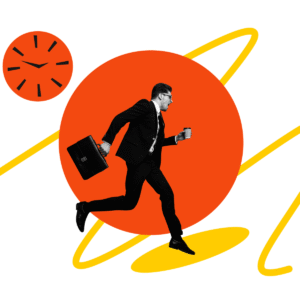 Step 2: Register Your Business and Name in Utah
Step 2: Register Your Business and Name in Utah Step 3: Understand Utah Business Taxes
Step 3: Understand Utah Business Taxes  Step 5: Build Your Legal and Financial Foundation
Step 5: Build Your Legal and Financial Foundation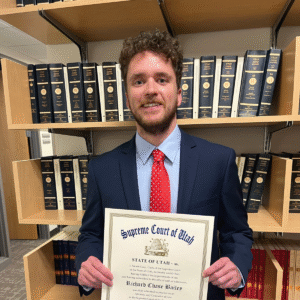
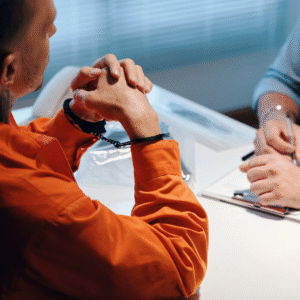 When you picture an attorney, what comes to mind?
If you grew up watching popular movies, you’ll most likely think of a criminal defense attorney who advocates for their clients in the courtroom and gets confessions out of witnesses.
While there is some truth to this, being a successful Utah defense attorney involves much more. Behind every strong courtroom performance are hours of case preparation and a strong team consisting of paralegals, legal assistants, and private investigators.
To shed light on what the job is really like, I interviewed seasoned criminal defense attorney (and professional Star Wars collector)
When you picture an attorney, what comes to mind?
If you grew up watching popular movies, you’ll most likely think of a criminal defense attorney who advocates for their clients in the courtroom and gets confessions out of witnesses.
While there is some truth to this, being a successful Utah defense attorney involves much more. Behind every strong courtroom performance are hours of case preparation and a strong team consisting of paralegals, legal assistants, and private investigators.
To shed light on what the job is really like, I interviewed seasoned criminal defense attorney (and professional Star Wars collector) 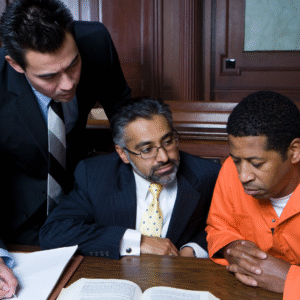 A Utah criminal defense attorney’s role is to advocate for people going through the hardest moments of their lives, that means navigating not just the legal system, but the human emotions associated with their case.
“Sometimes I’m the first person in a long time who has really listened to a client,” Nish said. “They might be scared, confused, or just overwhelmed by the process. My job isn’t only to defend them legally, it’s to help them feel like someone is in their corner.”
Most criminal cases don’t end in trial. In fact, many involve quiet negotiations, strategic plea deals, and advocating for fair outcomes in situations where the law can feel unforgiving.
A Utah criminal defense attorney’s role is to advocate for people going through the hardest moments of their lives, that means navigating not just the legal system, but the human emotions associated with their case.
“Sometimes I’m the first person in a long time who has really listened to a client,” Nish said. “They might be scared, confused, or just overwhelmed by the process. My job isn’t only to defend them legally, it’s to help them feel like someone is in their corner.”
Most criminal cases don’t end in trial. In fact, many involve quiet negotiations, strategic plea deals, and advocating for fair outcomes in situations where the law can feel unforgiving.
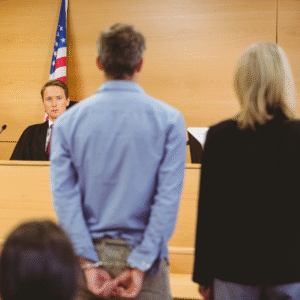 One of the most strategic decisions in a trial is whether to have the client testify.
“It’s never a decision I make lightly,” Nish explained. “You have to weigh the risks: how they’ll hold up under cross-examination, how the jury might perceive them… against the benefit of telling their story directly.”
Ultimately, the choice is made in collaboration with the client, based on both legal strategy and the individual’s comfort level.
One of the most strategic decisions in a trial is whether to have the client testify.
“It’s never a decision I make lightly,” Nish explained. “You have to weigh the risks: how they’ll hold up under cross-examination, how the jury might perceive them… against the benefit of telling their story directly.”
Ultimately, the choice is made in collaboration with the client, based on both legal strategy and the individual’s comfort level.
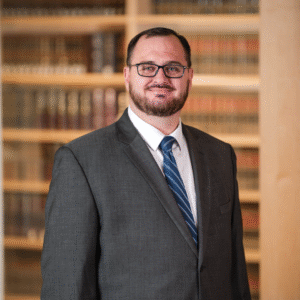 For those who imagine the courtroom as a stage for flashy arguments and dramatic wins, Jonathan Nish’s story is a reminder: the best defense attorneys are often the ones who work quietly but relentlessly, building trust, preparing thoroughly, and standing firm when it matters most.
During my time at Christensen & Jensen, I had the opportunity to work with him on a variety of criminal cases and witnessed firsthand the complexity of the job. Being a Utah criminal defense attorney requires quick thinking, sharp legal skills and a deep well of empathy. It’s about more than winning cases; it’s about ensuring that every person gets a fair shot, regardless of their circumstances. Most importantly, it’s about seeing your clients as human beings when the rest of the world may not.
If you’re facing criminal charges in Utah, the attorney you choose matters. The best defense lawyers aren’t just aggressive, they’re strategic, respected, and committed to fighting for their clients.
For those who imagine the courtroom as a stage for flashy arguments and dramatic wins, Jonathan Nish’s story is a reminder: the best defense attorneys are often the ones who work quietly but relentlessly, building trust, preparing thoroughly, and standing firm when it matters most.
During my time at Christensen & Jensen, I had the opportunity to work with him on a variety of criminal cases and witnessed firsthand the complexity of the job. Being a Utah criminal defense attorney requires quick thinking, sharp legal skills and a deep well of empathy. It’s about more than winning cases; it’s about ensuring that every person gets a fair shot, regardless of their circumstances. Most importantly, it’s about seeing your clients as human beings when the rest of the world may not.
If you’re facing criminal charges in Utah, the attorney you choose matters. The best defense lawyers aren’t just aggressive, they’re strategic, respected, and committed to fighting for their clients.
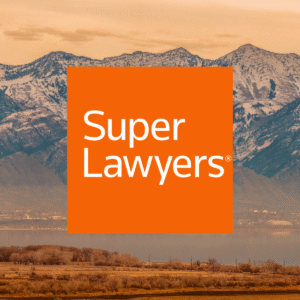
 We’re proud to announce that in The Best Lawyers in America 2026 Edition:
We’re proud to announce that in The Best Lawyers in America 2026 Edition:
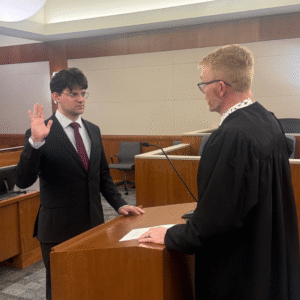
 When we think of summertime, we commonly think of warm weather, swimming at the local public pool, and grilling hamburgers outside with family and friends. Children are out of school, and families go on vacation. But for many high school, college, and graduate students, summer is a time for employment and internships.
Summer jobs typically last about three months, and their positions usually consist of food service, retail, construction, outdoor recreation roles, and office staff. These positions generally require less credentials and are very interchangeable, allowing employers to fire and hire new summer employees quickly and efficiently. This reality raises a common question: even though I am only employed for a short time, can my seasonal employer fire me without notice?
When we think of summertime, we commonly think of warm weather, swimming at the local public pool, and grilling hamburgers outside with family and friends. Children are out of school, and families go on vacation. But for many high school, college, and graduate students, summer is a time for employment and internships.
Summer jobs typically last about three months, and their positions usually consist of food service, retail, construction, outdoor recreation roles, and office staff. These positions generally require less credentials and are very interchangeable, allowing employers to fire and hire new summer employees quickly and efficiently. This reality raises a common question: even though I am only employed for a short time, can my seasonal employer fire me without notice?
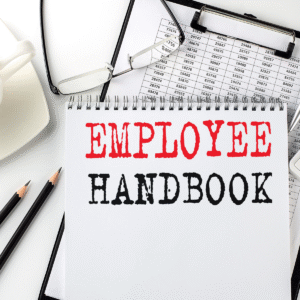

 Firework displays, apple pie, baseball, and blue jeans are all iconic parts of the American experience. While Utahns celebrate holidays with fireworks, it is essential to understand the types of fireworks that are legal, the regulations surrounding their use, and the responsibilities in case of an incident. In this article, we break down Utah’s fireworks laws, so you can enjoy them safely while understanding your rights and responsibilities.
Firework displays, apple pie, baseball, and blue jeans are all iconic parts of the American experience. While Utahns celebrate holidays with fireworks, it is essential to understand the types of fireworks that are legal, the regulations surrounding their use, and the responsibilities in case of an incident. In this article, we break down Utah’s fireworks laws, so you can enjoy them safely while understanding your rights and responsibilities.
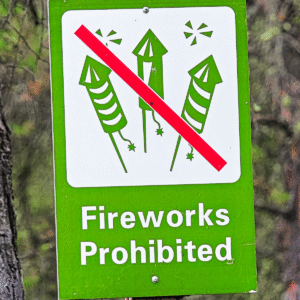 Illegal fireworks fall under five main categories:
Illegal fireworks fall under five main categories:
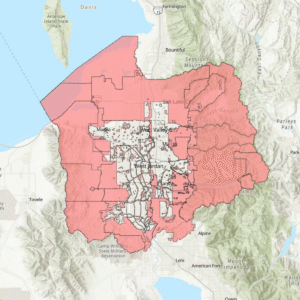 There are some high-risk fire zone areas where fireworks are banned year-round (including holidays). Cities publish maps of restricted areas, so always check your local fire department’s restrictions before using fireworks.
Salt Lake City regularly bans fireworks in canyons and near foothills. Lighting fireworks there, even on July 4, is illegal and can lead to penalties.
There are some high-risk fire zone areas where fireworks are banned year-round (including holidays). Cities publish maps of restricted areas, so always check your local fire department’s restrictions before using fireworks.
Salt Lake City regularly bans fireworks in canyons and near foothills. Lighting fireworks there, even on July 4, is illegal and can lead to penalties.
 Liability depends on the facts, but Utah law generally holds the following parties accountable:
Liability depends on the facts, but Utah law generally holds the following parties accountable:
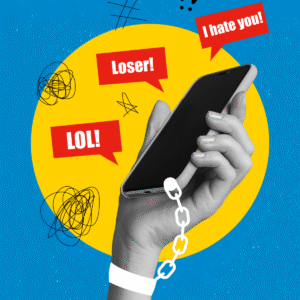 Over the past two decades, digital media has permeated nearly every facet of life, including the courtroom. Once geographically secluded, legal proceedings now unfold inside and outside the courtroom on a global stage through livestreams, TikTok, Reddit, and YouTube.
Public fascination with the justice system is not new. Since the 1960s, when television emerged, broadcasters brought major legal and cultural events, such as the assassinations of MLK Jr. and Malcolm X, into American living rooms.
Over the past two decades, digital media has permeated nearly every facet of life, including the courtroom. Once geographically secluded, legal proceedings now unfold inside and outside the courtroom on a global stage through livestreams, TikTok, Reddit, and YouTube.
Public fascination with the justice system is not new. Since the 1960s, when television emerged, broadcasters brought major legal and cultural events, such as the assassinations of MLK Jr. and Malcolm X, into American living rooms.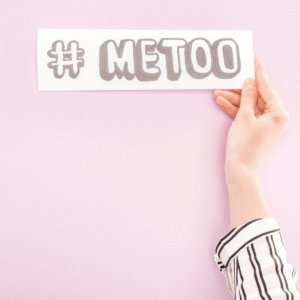 The legal threshold for a successful defamation claim, especially involving public figures, is extraordinarily high. Plaintiffs must prove not only that a false statement harmed their reputation, but also that the speaker acted with “actual malice,” which is a demanding standard that requires proof of knowing falsity or reckless disregard for the truth.
The legal threshold for a successful defamation claim, especially involving public figures, is extraordinarily high. Plaintiffs must prove not only that a false statement harmed their reputation, but also that the speaker acted with “actual malice,” which is a demanding standard that requires proof of knowing falsity or reckless disregard for the truth.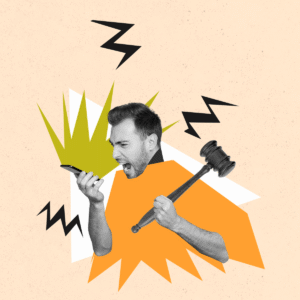 The dramatization of legal issues is not new. Films like The Social Network and Legally Blonde turned civil wrongs into entertainment long before a TikTok algorithm took over. But today’s audiences engage with the law in fundamentally different ways, perhaps because viewers are no longer passive observers. TikTok users break down courtroom exchanges; Reddit posters dissect legal findings line by line; YouTube creators monetize legal commentary for their subscribers. The law is no longer simply watched; rather, it is analyzed, reinterpreted, and performed in real time.
This convergence of law and culture raises pressing questions for the legal community:
The dramatization of legal issues is not new. Films like The Social Network and Legally Blonde turned civil wrongs into entertainment long before a TikTok algorithm took over. But today’s audiences engage with the law in fundamentally different ways, perhaps because viewers are no longer passive observers. TikTok users break down courtroom exchanges; Reddit posters dissect legal findings line by line; YouTube creators monetize legal commentary for their subscribers. The law is no longer simply watched; rather, it is analyzed, reinterpreted, and performed in real time.
This convergence of law and culture raises pressing questions for the legal community: